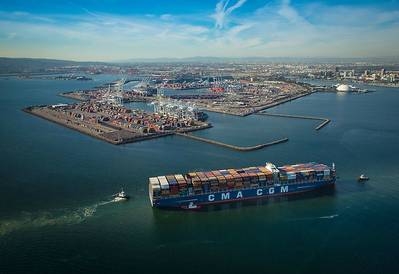Industry leaders examine trade trends for 2015 and beyond
Experts from across the goods movement industry spoke at the 11th annual “Pulse of the Ports: Peak Season Forecast,” an event hosted by the Port of Long Beach that drew 600 people to the Long Beach Convention Center’s Pacific Ballroom to hear how current trends will affect trade throughout the rest of the year.
While the annual event explores the cargo forecast, this year’s session also discussed the recent challenges of cargo movement and how the supply chain is evolving to cope with demands for higher efficiency and improved reliability.
“We bring all the parts of the supply chain together for Pulse of the Ports each year, and our speakers put all their issues and problems right on the table,” said Long Beach Harbor Commission President Doug Drummond. “That’s what we did today, and it shows how the Port of Long Beach is taking a leadership role, as we improve the supply chain’s velocity, efficiency and sustainability.”
Speakers at today’s event identified improvements in the U.S. economy, slowing growth in the Asian economy and long-term trends in shipping as forces that shape the flow of cargo through the San Pedro Bay ports.
Dr. Walter Kemmsies, chief economist for Moffatt & Nichol, titled his talk “Outlook – lots of moving parts” due to the mixed bag of forces that will shape trade this year. While the economy is not fully recovered, he said it’s been on the upswing and that will likely continue and will fuel increases in imports. Meanwhile export growth will be challenged due to a strong U.S. dollar and the increasing efficiency of overseas agriculture and other sectors.
Kemmsies noted that while the global economic outlook is for slow growth at best, global markets are becoming more stable, which in the long run will fuel increase trade through U.S. ports.
Other panelists recounted challenges impacting the industry, such as equipment shortages and congestion. Increased transparency, improved coordination among stakeholders, and supply chain optimization were among the key goals listed for 2015 and beyond.
Federal Maritime Commission Chairman Mario Cordero echoed a sentiment expressed by many of the panelists when he predicted that most of the volume redirected during the recent labor negotiations would return to West Coast ports.
“The West Coast has had its challenges. Despite serious concerns and legitimate questions over the last few months, this is the place to be,” Cordero said.












